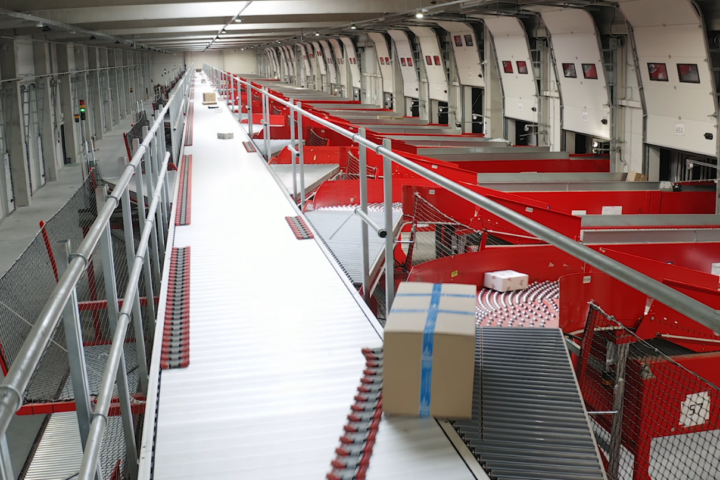You may find the world of compliance regulations in the Canadian trucking sector overwhelming, but understanding these requirements is necessary for your success. This guide offers you a step-by-step approach to effectively navigate the intricate landscape of regulations, from safety standards to environmental laws. By adhering to the necessary rules, you not only meet legal obligations but also enhance your business reputation and streamline operations. Let’s initiate on this journey to ensure your trucking business is compliant and thriving in Canada.
Key Takeaways:
- Understanding the specific compliance regulations set by federal and provincial authorities is important for maintaining operations within the Canadian trucking sector.
- Implementing a robust training program for staff on compliance practices can significantly mitigate risks and enhance operational efficiency.
- Regular audits and updates of compliance processes help to adapt to changing regulations and avoid potential penalties or disruptions to service.
Types of Compliance Regulations
For those involved in the Canadian trucking sector, understanding the various forms of compliance regulations is crucial for smooth operations. The primary categories include:
| Safety Regulations | Requirements aimed at maintaining vehicle integrity and driver wellness. |
| Environmental Regulations | Standards focused on reducing adverse effects on air and water quality. |
| Driver Compliance | Regulations regarding licensure, training, and health of drivers. |
| Load Securement Regulations | Guidelines for properly securing cargo to prevent accidents. |
| Hours of Service Regulations | Limits on driving hours to ensure driver safety and reduce fatigue. |
Recognizing the importance of these regulations can not only help you avoid penalties but also foster a culture of safety and responsibility within your organization.
Safety Regulations
Some of the most important safety regulations in the trucking sector include vehicle maintenance standards, driver qualification requirements, and the enforcement of fatigue management protocols. You must ensure that your fleet undergoes regular inspections to comply with the Canadian Council of Motor Transport Administrators (CCMTA) standards. Moreover, it’s crucial that your drivers are adequately trained and assessed to handle potential hazards on the road.
In addition to regular inspections, following fatigue management practices will help mitigate the risks linked to driver inattention. You will need to keep accurate logs of driving hours and ensure that your drivers adhere to the required rest periods. By prioritizing these regulations, your operation can maintain a high level of safety, reducing the likelihood of accidents and contributing to a more reliable service.
Environmental Regulations
Assuming you aim to maintain a compliant trucking operation, understanding environmental regulations is equally important. These regulations primarily focus on minimizing emissions and protecting local ecosystems along your routes. For example, you will need to pay attention to regulations regarding greenhouse gas emissions, employing technologies that adhere to Environmental Protection Agency (EPA) standards. Ensuring your fleet consists of low-emission vehicles can significantly enhance your compliance with these laws.
Compliance with environmental regulations not only helps in adhering to federal and provincial laws but also positions your company as a responsible entity within the community. With the emphasis on reducing carbon footprints, implementing sustainable practices can ultimately lead to lower fuel costs and improved public perception. Additionally, you might want to consider participating in eco-friendly initiatives, which can yield bonuses through government programs and grants.
Compliance is a journey that requires ongoing attention and adaptation to changes in local, provincial, and federal laws. Staying informed about current policies and actively seeking methods that enhance your trucking operation’s environmental performance is vital for sustained success in the industry.
Key Factors Influencing Compliance
Clearly, navigating compliance regulations in the Canadian trucking sector requires an understanding of several key factors that can influence your adherence to the laws in place. These factors can vary widely depending on your specific circumstances and the nature of your operations. Here are several elements to consider:
- Company Size: The size of your business can significantly affect the complexity of compliance.
- Operational Scope: The geographical area and type of freight you handle can influence the severity of regulations.
- Investment in Technology: Utilizing compliance management software can streamline processes.
- Regulatory Knowledge: Keeping up-to-date with changes in laws can mitigate risk.
- Safety Record: A solid safety history can positively impact your compliance standing.
The wide array of these factors means that you must adopt a comprehensive approach in order to effectively navigate the regulatory landscape.
Company Size
An important aspect to consider is how your company’s size shapes your compliance obligations. Smaller businesses often have more simplified processes, but they may lack the resources to keep up with complex regulations. Conversely, larger enterprises generally deal with a more extensive set of compliance rules due to their broader operational reach and increased risk factors. It’s vital for you to tailor your compliance strategy based on your company’s size, ensuring that you allocate appropriate resources to meet those requirements efficiently.
Operational Scope
On the other hand, the operational scope of your trucking business significantly influences your compliance requirements. If you operate solely within provincial borders, you may face fewer regulatory hurdles compared to companies engaging in cross-border transportation, which must adhere to both federal and international regulations. The nature of the loads you carry—whether hazardous materials or standard freight—also plays a role in determining the level of compliance you need to achieve. Understanding your operational landscape is therefore imperative to develop a compliant operation.
Scope of your operational activities directly correlates with the regulatory demands you’ll encounter. If you are involved in transporting hazardous materials, for instance, you must adhere to stricter safety protocols and reporting requirements compared to general freight transport. Furthermore, you may need to invest in additional training for your personnel and ensure that your fleet has the necessary safety equipment. This not only impacts your compliance obligations but also affects your insurance costs and liability risk. The broader your operational scope, the more comprehensive your approach to compliance must be, making it imperative for you to stay informed and prepared.
Step-by-Step Guide to Compliance
Now that you understand the potential challenges and complexities of compliance within the Canadian trucking sector, it’s necessary to follow a systematic approach to ensure you meet all regulations. The step-by-step guide outlined below will assist you in navigating these requirements efficiently and effectively.
| Step | Description |
|---|---|
| 1. Assess Current Practices | Evaluate your existing operational methods and identify areas requiring improvement. |
| 2. Develop a Compliance Plan | Create a detailed plan that outlines how you will comply with regulations. |
| 3. Train Your Staff | Ensure that your team understands and adheres to compliance requirements. |
| 4. Monitor and Update | Continuously monitor your compliance practices and update them as necessary. |
Assessing Current Practices
To begin the compliance journey, you should assess your current practices meticulously. This involves taking a close look at your operational protocols, safety measures, and any existing compliance frameworks you may already have in place. By doing so, you will gain insights into what works well and what needs enhancement. This assessment should also include a review of your fleet management, driver behaviors, and maintenance records.
Not only does this assessment highlight gaps in compliance, but it also provides an opportunity to strengthen your business operations. You may discover potential risks or areas of inefficiency that, when addressed, could lead to improved performance as well as lower operational costs. The more thorough your current practices review is, the better positioned you will be to formulate a robust compliance strategy.
Developing a Compliance Plan
While the creation of a compliance plan may seem daunting, it is necessary for ensuring you meet the regulatory standards governing the trucking industry in Canada. This plan should clearly outline your objectives, steps to achieve these objectives, and key performance indicators to measure your progress. It should also identify potential risks and strategies for mitigation. By involving your team in this process, you can foster a culture of accountability and shared responsibility.
The compliance plan is your guiding map through the labyrinth of regulations in the Canadian trucking sector. It should address areas such as driver training, vehicle maintenance, and safety inspections. Ensure the plan includes strict deadlines for implementing changes and regular review periods to evaluate its effectiveness. Tailoring your compliance efforts to reflect individual company needs while adhering to potently relevant regulations will fortify your commitments and safeguard your operations.
Tips for Maintaining Compliance
Keep your focus sharp on the key areas that can help you navigate the complex landscape of compliance regulations in the Canadian trucking sector. Regular compliance checks and detailed documentation can make a significant difference. Here are some tips to maintain compliance:
- Stay updated on federal and provincial laws
- Conduct routine inspections of vehicles and safety equipment
- Create a schedule for training sessions
- Maintain accurate records of all transactions and reports
- Engage with industry professionals and networks for insights
Thou must realize that effective communication and documentation strategies will position your operations for seamless compliance and overall success.
Regular Training and Education
For the best outcomes in compliance, invest in regular training and education for yourself and your team. This proactive approach allows you to stay informed on developing regulations and aligns with best practices in the industry. Engage in workshops, online courses, and seminars specifically targeting updates in safety training, operational procedures, and legal obligations. By prioritizing education, you can ensure that every member of your team is equipped to recognize and adapt to regulatory changes.
Utilizing Technology and Tools
Education on advancing technology can greatly enhance your compliance efforts. Utilizing software systems specifically designed for the trucking industry can streamline data collection, maintenance schedules, and documentation management. Tools such as Electronic Logging Devices (ELDs) are invaluable, as they ensure accurate recording of driving hours, thereby mitigating the risk of violations. Integrating fleet management systems allows for real-time monitoring, enabling you to spot potential compliance issues before they escalate.
This strategic use of technology not only improves efficiency but also enhances your ability to maintain compliance effortlessly. Among the most important features are automated alerts for documentation deadlines, integrated safety-check reminders, and detailed reporting capabilities. By adopting these tools, you reduce the risk of non-compliance, which can result in serious penalties and affect your business reputation. Ensure that your staff is adequately trained to use these systems, as this will foster a safer, more compliant operational environment.
Pros and Cons of Compliance Regulations
All compliance regulations in the Canadian trucking sector come with their own set of advantages and disadvantages that you should consider as you navigate this complex landscape. By understanding both sides, you can make informed decisions that align with your business objectives.
| Pros | Cons |
|---|---|
| Increased safety on the roads | High compliance costs |
| Improved operational efficiency | Complex documentation and record-keeping |
| Enhanced reputation in the industry | Potential for punitive fines |
| Access to government grants and incentives | Limits on flexibility in business operations |
| Promotes sustainability practices | Pace of regulation change can be overwhelming |
| Standardized procedures improve accountability | Training expenses for employees |
| Greater consumer confidence | Increased administrative burdens |
| Facilitates cross-border operations | Potential for operational disruptions during audits |
| Improved workplace morale and culture | Initial investment in technology may be steep |
| Insurance premium reductions over time | Difficulty in keeping up with evolving compliance codes |
Benefits for Businesses
Pros of compliance regulations include increased safety measures that protect not just your drivers but also the public. By adhering to these regulations, your operations can see improved efficiency, which directly affects your bottom line. A sound reputation is built through consistent regulatory compliance, ultimately attracting more clients who value safety and reliability.
In addition to creating a safer environment, compliance can provide access to various government grants and incentives designed to support businesses that meet regulatory standards. This can significantly help with capitalizing on new technologies related to sustainability, which not only meets compliance but also appeals to a growing consumer base focused on environmental responsibility.
Challenges and Costs
With the benefits come notable challenges. Compliance regulations can lead to substantial costs for your business due to expenses related to training employees, undergoing audits, and maintaining the necessary documentation. You may find that the complexity of these regulations leads to increased administrative burdens that can divert resources away from your core operations.
Regulations can also limit your flexibility in business operations, as navigating the landscape often requires meticulous planning and adaptation to stay compliant. Moreover, the continuous evolution of standards can make it difficult to keep up, leading to the risk of punitive fines if you inadvertently fall out of compliance. Staying informed and proactive is necessary to avoid potential operational disruptions.
Common Pitfalls to Avoid
Once again, navigating compliance regulations in the Canadian trucking sector can be challenging, and avoiding common pitfalls can save you time, money, and potential legal troubles. It’s crucial to be aware of issues that can derail your operations, including ignoring changes in regulations and maintaining poor record-keeping practices. By addressing these pitfalls head-on, you can create a more compliant and efficient operation, positioning your business for growth and success.
Ignoring Changes in Regulations
On the regulatory landscape is ever-evolving, and failing to keep up with changes can result in serious repercussions for your trucking business. Regulatory bodies may introduce new laws, amend existing ones, or adjust enforcement practices—all of which can directly affect your operations. You must stay informed through dedicated resources, industry newsletters, or even workshops, ensuring your fleet meets all fresh mandates and avoids potential penalties.
Poor Record-Keeping
One of the most significant pitfalls in compliance is poor record-keeping, which can lead to compliance violations and increased scrutiny from regulatory authorities. It’s vital that you maintain comprehensive and accurate records of your operations, including driving logs, maintenance schedules, and employee qualifications. Incomplete or inaccurate documentation can not only undermine your credibility but can also result in hefty fines that can have long-term financial repercussions for your business.
Avoid overlooking routine audits of your record-keeping practices, as this will help identify any inconsistencies or gaps early on. By implementing effective record management systems and training your staff on their importance, you will not only streamline your compliance but also promote a culture of accountability within your organization. This vigilance positions your trucking company favorably in terms of regulatory interactions, illustrating your commitment to operational excellence.
Final Words
The Canadian trucking sector is characterized by a complex web of compliance regulations that can significantly impact your operations. Staying informed and proactive about these regulatory requirements is imperative for ensuring your business remains competitive and compliant. By understanding federal and provincial regulations, engaging with industry associations, and leveraging technology for tracking compliance, you can navigate this landscape with confidence.
Ultimately, your success in the trucking industry hinges on your ability to adapt to regulatory changes and implement best practices. By prioritizing ongoing education and utilizing available resources, you will position yourself effectively within the market. Your commitment to compliance not only fosters a safer and more efficient operation but also enhances your reputation among clients and stakeholders.
FAQ
Q: What are the primary compliance regulations that Canadian trucking companies need to follow?
A: Canadian trucking companies must adhere to several key regulations, including the Canada Transportation Act, the Hours of Service Regulations, the Vehicle Equipment Safety Regulations, and the National Occupational Safety and Health Regulations. Additionally, companies must comply with provincial regulations, which may vary by province. Ensuring proper documentation and adherence to safety protocols is important for compliance, along with maintaining up-to-date vehicle inspections and compliance with environmental standards.
Q: How can trucking companies stay updated on changes to compliance regulations in Canada?
A: Staying informed about regulatory changes can be achieved through several avenues. Trucking companies should regularly review updates from Transport Canada, provincial transportation departments, and industry associations such as the Canadian Trucking Alliance. Subscribing to newsletters or joining forums and discussion groups related to trucking can also provide valuable insights. Additionally, attending workshops and conferences focused on trucking regulations can enhance understanding and help companies adjust their practices accordingly.
Q: What role do technology and training play in ensuring compliance in the trucking sector?
A: Technology and training are integral to achieving compliance in the trucking sector. Utilizing fleet management software can help in tracking driver hours, vehicle maintenance, and adherence to regulatory requirements. Electronic logging devices (ELDs) are also important for ensuring compliance with Hours of Service regulations. Furthermore, investing in training programs for drivers and management personnel can enhance knowledge of regulatory requirements and foster a culture of safety within the company. Regular training sessions can keep employees informed about best practices and any changes in the law.

















